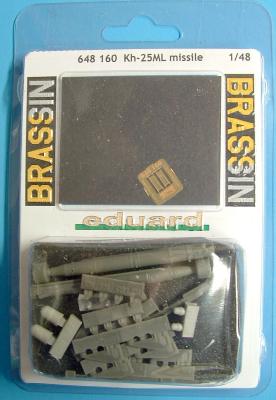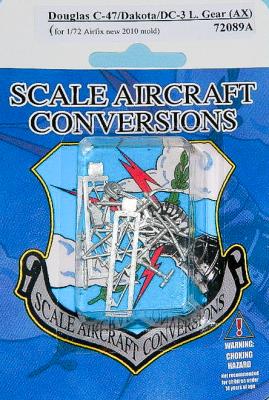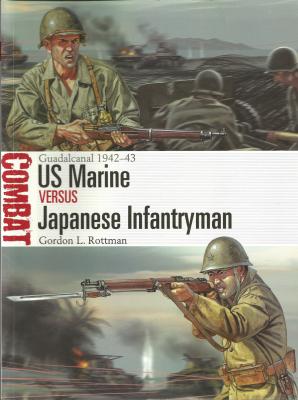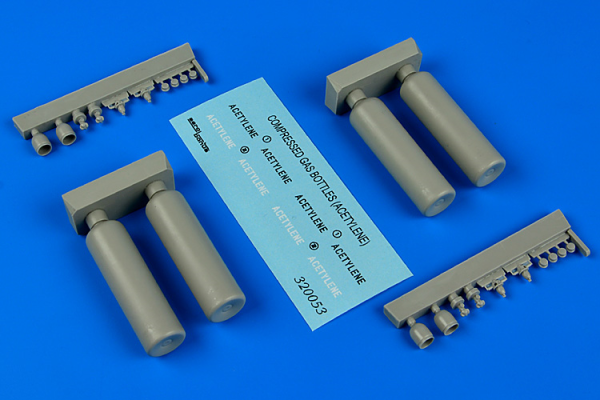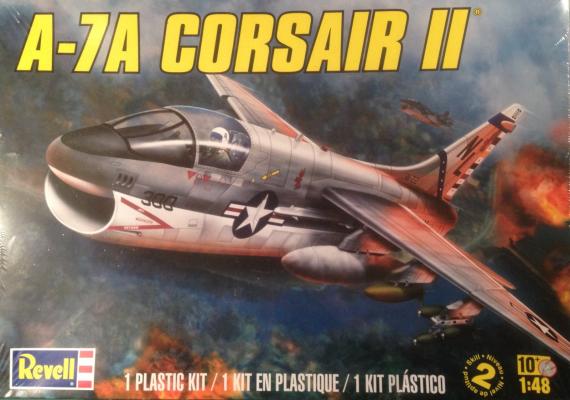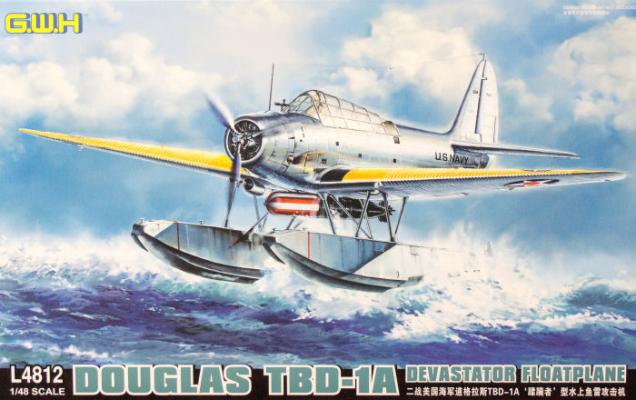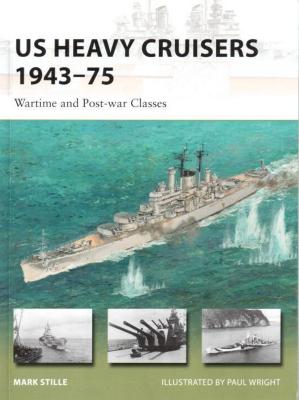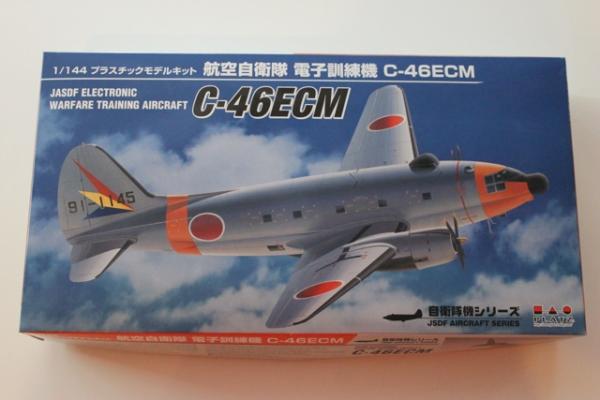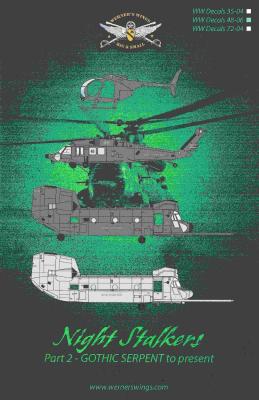The KH-25ML is a Soviet/Russian LASER guided surface to air missile, designated AS-10 Karen by NATO. Its primary use was/is against hardened targets like fortifications, bunkers, or armor. In Afghanistan Su-25 crews started employing the weapon in the mid-80s to try to collapse cave entrances used by the Taliban. The CEP is cited at 4 meters. In addition to the Su-25 other Soviet era strike aircraft such as the MiG-27 Flogger, and Su-17M and Su-22M Fitter carried the weapon. These aircraft used nose mounted optical target tracking sensors with boresighted laser designators, for self-designation. While superseded by newer weapons, it can still be found in the inventories of many former Soviet states, Warsaw Pact countries and client states.
What's New
First, my thanks to Ross, the CEO of Scale Aircraft Conversions, for providing IPMS/USA with so many examples of his new products. I am certainly not paid to say any of this, but Ross and his crew have taken the metal landing-gear market by storm. Their cautious first releases were met with a chorus of “whys?” That was, until their metal was proven (a bad pun, but true).
My personal epiphany came after building the Revell 1/32 Ju 88 kit. The owner of my local, now-defunct, hobby shop tried to convince me to use a set of SAC gear, but I passed based on the cost. Of course, the kit’s plastic gear failed after two months. I had second thoughts, but I was not convinced to try the SAC products until a similar fate befell my 1/48 Roden T-28; the kit’s gear legs were so accurately scaled, the thin, soft-plastic of the nose-gear leg couldn’t hold the weight of the CMK resin engine I had installed.
US Marine versus Japanese Infantryman: Guadalcanal 1942–43 is the eighth volume in Osprey’s Combat series and the first dealing with an American fighting force in WWII. Fortunately, this volume deals with the US Marines. There are never enough references covering the USMC, so this volume is a welcome release.
This new book deals with the Marines fighting the Japanese infantry during the Guadalcanal campaign. However, it only deals with the first three months of the Marine’s involvement, concentrating on the three main battles that occurred during the three months: the Battle of the Tenaru in August, the Henderson Field attack in September and finally the Matanikau counteroffensive in October.
Aerobonus latest release is an oil draining cart used as a catch basin for motor oil. The set consists of eight resin parts and a decal sheet. The parts are in typical gray resin and are flawless. Parts removal is easy with careful trimming needed on the cart body and handle. Take your time and use a razor saw. A light sanding and you are good to go. The wheels are tiny as are the bolts to hold the handle. Be careful and things will clean up quickly.
I did notice one problem and that is the two bars that extend out of the front of the cart to hold the handle. Mine were broken off so i sanded them smooth and made a new set with strip in less than five minutes. Aires has protectors built into the casting block to prevent this but it didn't work in this case.
Aires Aerobonus line continues to pump out great add on sets for dioramas for kits and the latest release is a set of Compressed Gas cylinders in 1/32 and this time specifically acetylene tanks. The set has four casting blocks of materials. two of the blocks are the tanks with four bodies being provided. the remaining two block have the options for each tank. There are four closed tops and enough hardware to make the tops open and have gauges. the instructions show you both ways and the decision is the modelers.
Construction is simple. Cut the tank from the casting block and sand smooth. For the closed tank, cut the lid off and sand smooth and glue on the top of the tank. For one with the pressure regulator, cut the regulator and dial off and glue those on the tank as shown in the drawing.
Thank you to Revell, Inc., for providing this kit for review. I had fun building the kit and trying new techniques while polishing older skills. Thank you to the IPMS Reviewer Corps for allowing me the opportunity to review this reissued classic.
The A-7A Corsair II is a distinctive former workhorse of many flying services. Two aircraft are represented by this kit, with markings options for a USN A-7A from VA-22, or a commemorative aircraft from the Portuguese Air Force, celebrating 64,000 operational hours.
The Douglas TBD-1A was a one-off aircraft built to compete for a Dutch requirement in 1939 for a float plane bomber, the Netherlands being blessed with a vast inland sea from which to operate. The Dutch were not interested and the aircraft was sold to the Navy for testing at Naval Air Test Center (later this center would outgrow NAS Anacostia and NAS Patuxent River would be built). The Navy had no need for a float plane version of it carrier aircraft, yet the Navy found the TBD-1A to be a stable torpedo and bombing platform, with the oversized floats only diminishing air speed by 20 knots. So theTBD-1A was reassigned to Experimental Squadron Two (VX-2) at NAS Quonset Point in Rhode Island (part of the 1st Naval District) where it would support the Newport Torpedo Station in the testing of aerial torpedoes. Since it was a float plane and could be closer to the action, the aircraft operated from an air facility at the south end of Gould Island in the Narragansett Bay off Newport, RI.
Thank you very much to the wonderful folks at Osprey Publishing for providing this new publication for review.Thanks are also due to the IPMS Reviewer Corps for allowing me the opportunity to explore a fascinating historical documentation and description of the last class of heavy cruisers. The book was particularly interesting to me, since my father and one of my college professors served aboard the Newport News. This volume follows a previous release by the author describing the pre-war heavy cruisers, also published by Osprey.
History
The Curtiss C-46 Commando was a transport aircraft, manufactured by Curtiss Wright Co. and the first flight was March 1940. There were 36 C-46 delivered to the JASDF and they served as JASDF’s main transport aircraft. Serial numbers 140, 143, and 145 were converted to C-46ECM and served with the Electronic Warfare Training Squadron of the Air Defense Command. Each of these three aircraft were configured differently resulting in all three aircraft having different antenna locations. C-46ECM No. 143 is on display at Tokorozawa Aviation Memorial Park, and No. 145 is on display at JASDF Iruma Airbase.
Werner’s Wings is a Baltimore, MD based firm that offers decals and resin detail parts for scale modelers. Floyd Werner has been around scale modeling for many years, and is one of the hobby’s leading authorities on US Army rotary wing aircraft (not just through modeling, but from years of very personal experience!), and WWII Luftwaffe fighters. A quick search of the IPMS Review or other modeling-related sites will yield plenty of background on his considerable modeling skills and knowledge.
Floyd’s passion for modeling modern rotary aircraft subjects is evident in this latest decal release of Night Stalkers, Part II - Gothic Serpents to present. The subjects of these sets continue Werner’s Wings documenting the history of the 160th SOAR. This set picks up at the Gothic Serpent operation in Somalia, and includes 20 examples from then, up to the current time. Markings are included for four A/MH-6 “Little Birds”, nine MH-60 Blackhawks and seven MH-47 Chinooks as follows:

